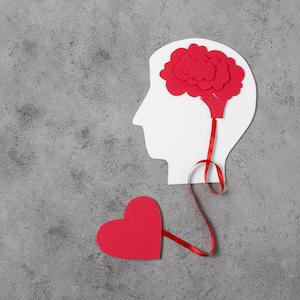Alexithymia profile across migraine subtypes: a cross-sectional study

Accepted: 17 July 2025
All claims expressed in this article are solely those of the authors and do not necessarily represent those of their affiliated organizations, or those of the publisher, the editors and the reviewers. Any product that may be evaluated in this article or claim that may be made by its manufacturer is not guaranteed or endorsed by the publisher.
Authors
Background: Migraine is a prevalent neurological disorder, with chronic migraine (CM) and medication overuse headache (MOH) often comorbid with psychiatric conditions. Patients with CM may experience social cognitive impairments, including alexithymia, which could contribute to their condition’s severity and prognosis. This study aims to characterize alexithymia in patients with episodic migraine (EM) and CM and explore differences in alexithymia between patients with and without aura.
Methods: This cross-sectional study included adult patients with EM, CM (with or without MOH), and healthy controls (HCs), conducted at two tertiary headache centers in Italy. Participants completed the Toronto Alexithymia Scale-20 (TAS-20) to assess alexithymia levels. Demographic, clinical, and cognitive functioning data were collected. Migraine features, including frequency, aura symptoms, and medication usage, were also recorded.
Results: The cohort included 200 migraine individuals and 79 HCs. Patients with CM exhibited significantly higher alexithymia scores (56.0±13.2) compared to EM patients (47.8±12.0, p<0.001) and HCs (44.5±11.9, p<0.001). A higher proportion of CM patients (32.0%) had pathological alexithymia compared to EM patients (16.0%) and HCs (9.0%) (overall difference, p<0.001). No significant differences were found in TAS-20 scores between migraine individuals with aura (45.2±9.9) and those without aura (49.5±13.0, p=0.182).
Conclusions: Patients with CM exhibit higher levels of alexithymia compared to those with EM and HCs. These findings suggest that alexithymia may be a more specific trait of CM. Future research should investigate the role of alexithymia in migraine management, particularly in relation to its impact on quality of life and treatment outcomes.
How to Cite

This work is licensed under a Creative Commons Attribution-NonCommercial 4.0 International License.
PAGEPress has chosen to apply the Creative Commons Attribution NonCommercial 4.0 International License (CC BY-NC 4.0) to all manuscripts to be published.

 https://doi.org/10.4081/cc.2025.15781
https://doi.org/10.4081/cc.2025.15781









